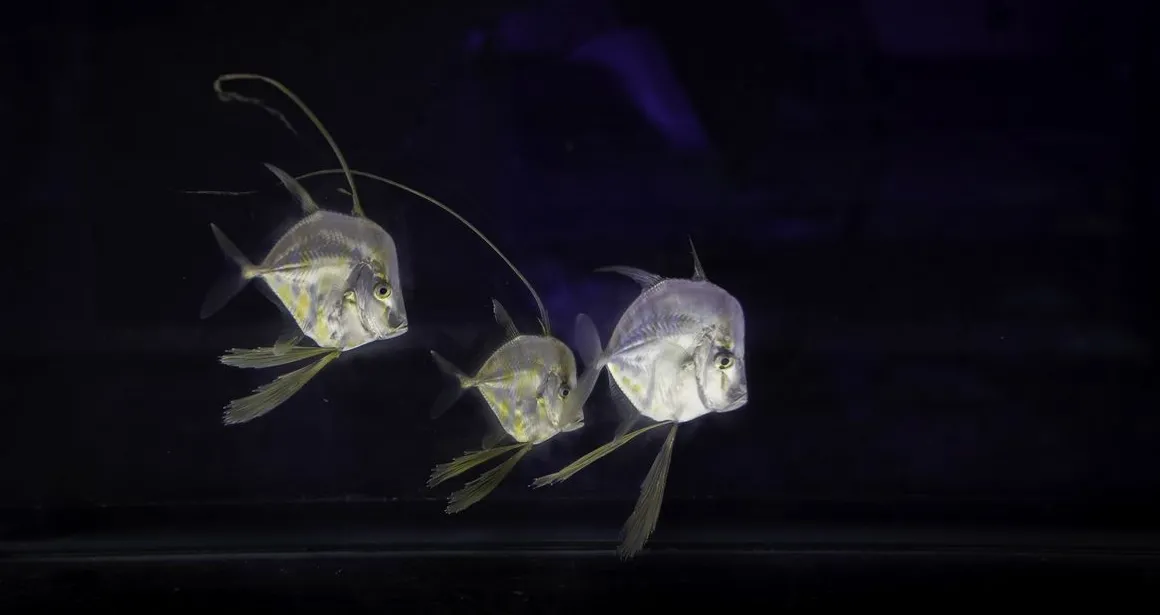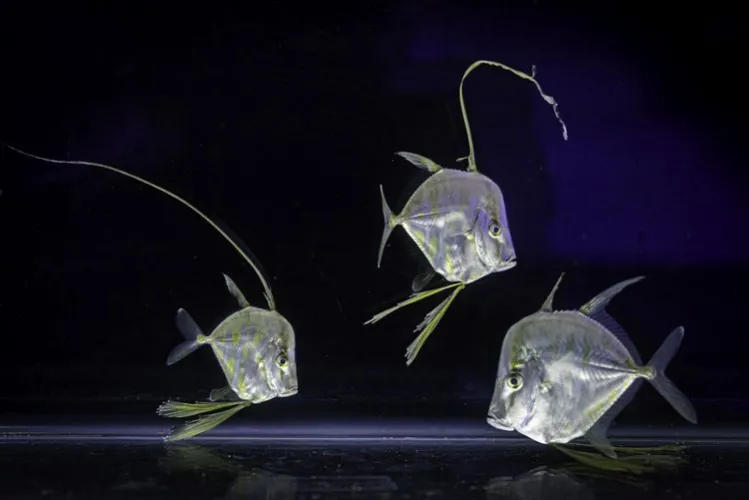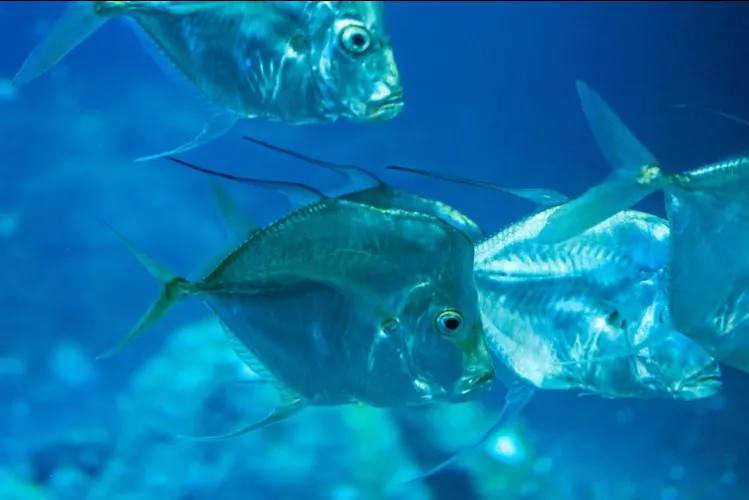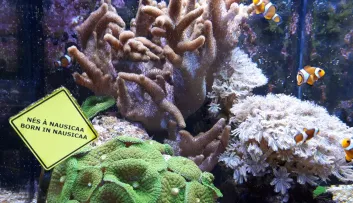Atlantic lookdowns from the breeding programme go to the aquarium in La Rochelle
On 15 July, 40 juvenile Atlantic lookdowns, born thanks to the partnership between Nausicaá and BioNaMeris, will be sent to La Rochelle.
- 3mn read

The breeding of fish at Nausicaa is going well: Atlantic lookdowns are being added to the list of 15 marine species already successfully raised in its aquariological reserves, the result of a fruitful collaboration between Nausicaá and BioNaMeris.
Some of the fish born at Nausicaá join the exhibitions, but others are sent to partner aquariums. This is the case for forty Atlantic lookdowns which are being sent to the aquarium in La Rochelle. An example of collaboration between aquariums and an innovative French company in the name of biodiversity preservation.
Young Atlantic lookdowns born at Nausicaá and adult ones.
Rearing marine species, a technical challenge for preserving biodiversity
With 1,600 species living at the aquarium, whether they are tropical, cold- or temperate-water fish, the reproductive potential at Nausicaá is enormous. And making a success of rearing sea fish constitutes a veritable technical feat to meet a major challenge, that of reducing the impact of aquariums on the natural habitat and thus preserve the natural resources.
Eggs are collected every day by the BioNaMeris teams, particularly in the great High Seas tank where some fifty different species live, including the Atlantic lookdowns, these slender silvery fish that swim around in schools.
The eggs are sent to Nausicaá’s aquariological reserves and the larvae that are then hatched are raised by the BioNaMeris teams. The company is specialised in the production of small living prey, such as the copepods. This food is suited to their morphology and specific nutritional needs and is essential for the survival and growth of the larvae whose size rarely exceeds 3 millimetres at birth.
During their development, the larvae undergo several physical transformations before reaching the juvenile stage when they resemble the adult fish.
Nausicaá’s handlers then take over and continue to watch over the growth of the fish so they can then be placed in the aquarium’s exhibitions or be sent to other partner aquariums.
Thus, at the time of a forthcoming visit you’ll be able to discover the Indo-Pacific scissortail sergeants (Abudefduf sexfasciatus), longsnout seahorses (Hippocampus reidi) and king angelfish (Holacanthus passer) born in the framework of this breeding programme.
Exchange and collaboration to preserve biodiversity
The partnership between Nausicaá and BioNaMeris combines an environment, means and expertise resulting in the development of scientific protocols and a better understanding of species that are still sometimes poorly known in their natural habitat, notably concerning the larvae and the different stages in their metamorphosis.
These works are shared with the profession as a whole to allow our fellow aquariums to benefit from the fish born from this programme.





